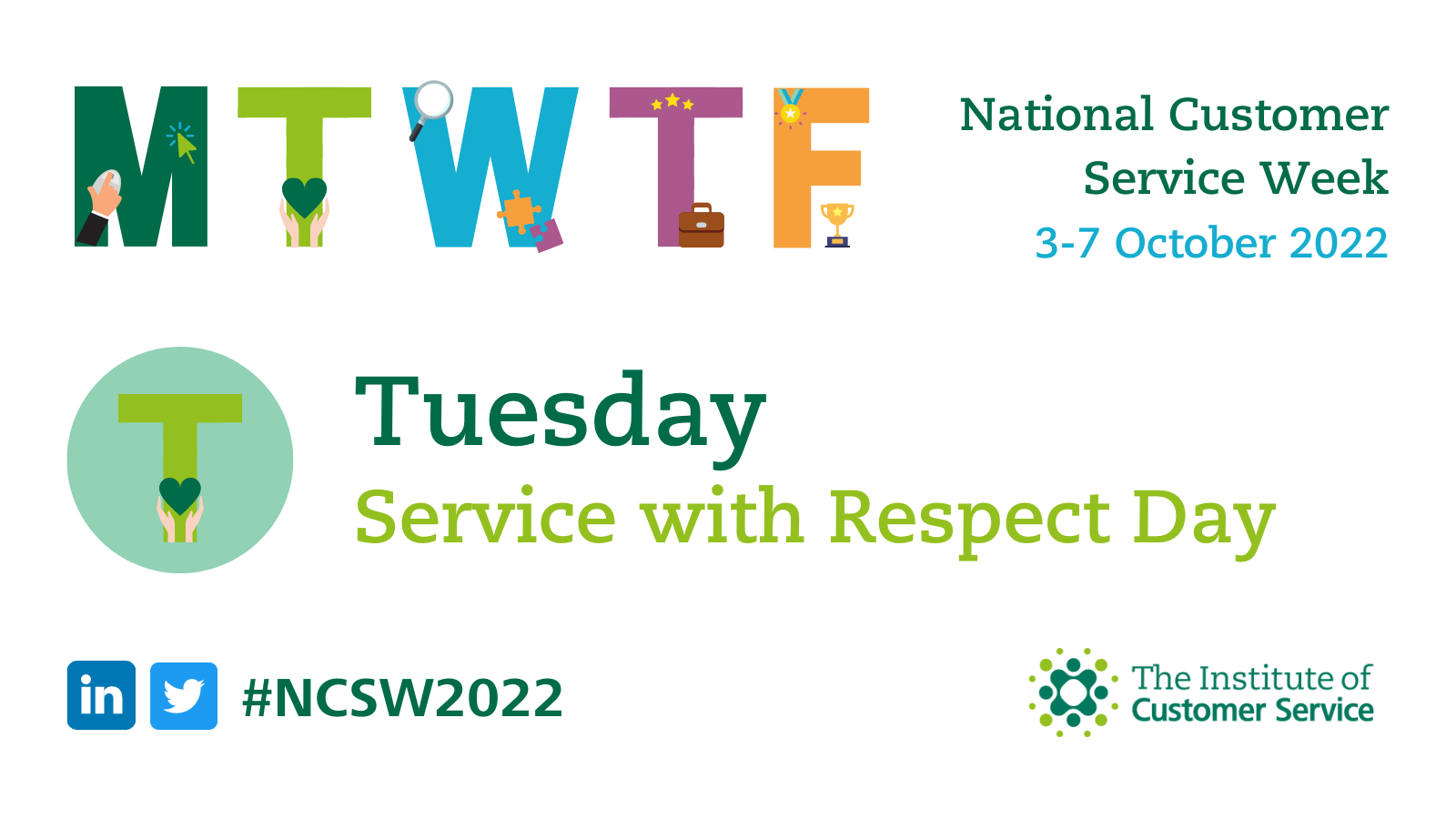Service With Respect Day
- 04 October 2022

The Institute of Customer Service is today celebrating Service with Respect Day in response to a change in legislation that protects all customer-facing workers from hostility and abuse. How sad that we needed a change in legislation to provide protection for customer-facing staff from angry and dissatisfied customers. It feels as though we have fixed a by-product not the problem itself.
Our work at RBL always starts with understanding the customers – who are they and what do they want from a business or service? If they are getting upset and angry, we need to understand why and then work to fix the problems to prevent them from happening before we get to the stage of customers becoming hostile and abusive towards staff.
This is where our Voice of the Customer (VoC) work comes in. We believe that if we start by understanding the customers and their needs, we can then examine how we service them and whether the solutions we are offering meet customer needs. It’s essential to examine this from the customer’s perspective and not that of the business – i.e., look from the outside in so that we can see a much fuller picture and get a clearer understanding of the customer’s perspective. When we look from the inside (of our business) out, we see just a snapshot of what’s happening, we can’t see what’s going on in the rest of the picture that may be influencing the customer’s reactions and responses. We can only see a sliver of the whole story.
 If we flip this view 180 degrees and look from the customer’s perspective we can see more of the picture, we can consider the customer journey from a customer’s perspective – how easy have we made it to buy or interact with our service teams? We can see how frustration can build if it’s impossible to find a telephone number to contact an organisation or if we ask a question via a chat function, why it’s so annoying when you get the answer to a question you didn’t ask.
If we flip this view 180 degrees and look from the customer’s perspective we can see more of the picture, we can consider the customer journey from a customer’s perspective – how easy have we made it to buy or interact with our service teams? We can see how frustration can build if it’s impossible to find a telephone number to contact an organisation or if we ask a question via a chat function, why it’s so annoying when you get the answer to a question you didn’t ask.
We can also start to understand the context in which our customers or prospects are engaging with us – how easy is it to transact or engage with a firm or charity when you’re in a vulnerable circumstance for example. Given the current cost-of-living crisis, the number of customers in financially vulnerable circumstances has significantly increased. Back in 2020, the Financial Conduct Authority (FCA) estimated this to be over 53% of the UK’s adult population, so imagine where that number sits now! And we must remember that financial vulnerability is not the only vulnerable circumstance. Just a couple of months ago Vodafone were in the spotlight for handling cancellation requests from family members of customers who had passed away. The process of closing an account was described as complex and “impossible” with wait times of 45 mins or more to even connect to a customer services rep and then being challenged about having the authority to close the account. Customers were reportedly being asked to put the deceased account holder on the phone to confirm that it was ok for Vodafone to speak to the caller.
By taking a step back and seeing the situation from the customer’s perspective really helps. Organisations must remember that they are only one of on average over 20 organisations that a bereaved family member has to notify of a death. Bereavements are emotional and family members talk of “psyching themselves up” to contact each company. In bereavement, stress levels are higher than normal, so customers react in more extreme ways. It becomes understandable (although not justifiable) when customers act with anger and abuse when barriers are placed in their way to what they believe to be a simple request. It’s never OK to be rude or abusive to a customer services staff member – as customers we must remember that they’re the messengers not the designers of these customer journeys. They’re often as frustrated as customers by poor processes and service.
We work with our clients to examine customer journeys and processes across each point of engagement and interaction across the customer and purchase lifecycle. Using Customer Experience Audits, we gather insight from real customers in real situations and identify where in those customer journeys improvements can be made and how those changes could be implemented.
By removing the barriers and frustrations in customer journeys, we open the pathways for customers to have clear and helpful conversations with customer-facing teams without anger or abuse. We advocate getting your customer services teams involved in the customer journey mapping sessions – they’ll bring insight and understanding that’s often missed.
If you’d like to hear more about how to approach planning customer service around customer needs, I’m giving a presentation on this subject at the Direct Commerce Association’s Annual Summit on Tuesday, 18th October CLICK HERE to book a ticket.
To find out more about how we work with our clients visit www.ReynoldsBusbyLee.com
Elaine Lee
Photo: Ed Vazquez / Unsplash




